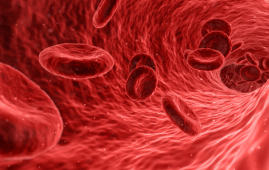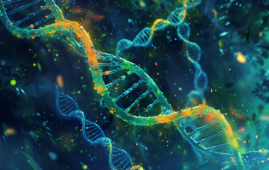

According to a new study by Ramya Ganesan of Emory University in the US and colleagues, a typical chemotherapy treatment damages nearby non-cancer cells, which can subsequently cause latent cancer cells to reawaken and encourage the growth of cancer. The discovery is crucial for comprehending cancer recurrence and could suggest crucial new prevention targets.
Chemotherapy advances have significantly decreased mortality rates for numerous cancer forms, including breast cancer. However, within the first five years, up to 23% of breast cancer patients have recurrence. All cancer cells should be killed by treatment, however occasionally certain cancer cells go into a dormant condition where they cease dividing and are resistant to chemotherapy. When latent cells reawaken and begin dividing once more, recurrence happens.
Although some research has suggested that chemotherapy may help cells come out of dormancy, the exact mechanism causing this impact is still unclear.
The authors used both a breast cancer animal model and a breast cancer cell model to investigate that subject. Importantly, the cell model featured connective tissue cells that are present in breast and other tissues as well as non-cancer stromal cells. They observed that even at extremely low dosages of the chemotherapeutic medication docetaxel, stromal cells were damaged but cancer cells were not, and that treatment led to cancer cells entering the cell cycle again.
The authors demonstrated that the injured stromal cells’ release of two important cell signaling molecules, granulocyte colony stimulating factor (G-CSF) and interleukin-6 (IL-6), which acted on the dormant cells to promote their growth both in vitro and in vivo, was the primary cause of this reawakening of dormant cells.
They demonstrated that antibodies that neutralized either G-CSF or IL-6, or a medication that stopped the mediator of those signals within cancer cells, prevented the awakening from dormancy caused by docetaxel treatment, which gave the scientists viable anti-cancer targets.
The consequences of these studies are quite significant. First, they emphasize how other cells outside the cancer cells themselves are crucial in deciding how well chemotherapy works. Second, they offer a plausible molecular explanation for the finding that high blood IL-6 concentrations are connected to an early recurrence in breast cancer patients following chemotherapy, which may increase the usefulness of that biomarker in treatment selection. Thirdly, they offer fresh targets for avoiding repetition.
Dr. Ganesan and Dr.Sukhatme add, “Our paper highlights a deleterious effect of cancer chemotherapy: release of stromal IL-6 and G-CSF by taxane chemotherapy awakened dormant breast cancer cells, a postulated mechanism for tumor relapse. Transient blockade of cytokine signaling during chemotherapy administration may prevent tumor recurrence.”
more recommended stories
 Fat-Regulating Enzyme Offers New Target for Obesity
Fat-Regulating Enzyme Offers New Target for ObesityKey Highlights (Quick Summary) Researchers identified.
 Spatial Computing Explains How Brain Organizes Cognition
Spatial Computing Explains How Brain Organizes CognitionKey Takeaways (Quick Summary) MIT researchers.
 Gestational Diabetes Risk Identified by Blood Metabolites
Gestational Diabetes Risk Identified by Blood MetabolitesKey Takeaways (Quick Summary for Clinicians).
 Phage Therapy Study Reveals RNA-Based Infection Control
Phage Therapy Study Reveals RNA-Based Infection ControlKey Takeaways (Quick Summary) Researchers uncovered.
 Pelvic Floor Disorders: Treatable Yet Often Ignored
Pelvic Floor Disorders: Treatable Yet Often IgnoredKey Takeaways (Quick Summary) Pelvic floor.
 Urine-Based microRNA Aging Clock Predicts Biological Age
Urine-Based microRNA Aging Clock Predicts Biological AgeKey Takeaways (Quick Summary) Researchers developed.
 Circadian Control of Neutrophils in Myocardial Infarction
Circadian Control of Neutrophils in Myocardial InfarctionKey Takeaways for HCPs Neutrophil activity.
 E-Cigarette Use and Heart Attack Risk in Former Smokers
E-Cigarette Use and Heart Attack Risk in Former SmokersKey Takeaways for Clinicians and Nurses.
 Ultramarathon Physiology: What HCPs Should Know?
Ultramarathon Physiology: What HCPs Should Know?Ultramarathon Metabolism: What Happens to the.
 High-Intensity Training and Oxidative Stress Insights
High-Intensity Training and Oxidative Stress InsightsNew Evidence Linking High-Intensity Training and.

Leave a Comment